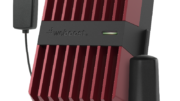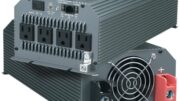Your car is smarter than you think. It knows how you drive, in many cases it even knows where you drive. Today’s cars are really miracles of modern technology, full of computers and diagnostic tools.
Of course it wasn’t always like this. There was a time that a qualified mechanic needed a collection of arcane tools and a keen intuition in order to understand what was going on with a car. Those days are gone, and today’s mechanics rely on computer diagnostics more than their eyes and ears. You may think that’s a move in the wrong direction, but sometimes progress doesn’t work the way you want.
In order to make it easier for computers to interface with cars, you need to have a standard interface. Otherwise, a repair shop would need a separate computer for every model of car.
It started in California
California mandated the first standard connectors for car diagnostics, and it was the first to mandate what eventually became known as On-Board Diagnostics, version 2. OBD-II started in California in 1994 and by 1996 the federal government followed suit. They required every US-made car for US sale to have the OBD-II system. By 2008 it was mandatory for nearly every vehicle. After decades of implementation, the OBD-II system is found in nearly every car in the US.
The OBD-II connector
A key part of the OBD-II system is the connector you see at the top of this article. By standardizing this connector and what the pins do, it makes it very easy to know what’s going on in your car. OBD-II shows the status of key systems and even shows the results of errors that happened in the past but aren’t happening now.
A use that no one expected
It took many years, but third-party manufacturers started using OBD-II in new ways. Some insurance companies will give you a discount if you connect a data logger to your OBD-II port. This will let the car log if an accident was your fault. Since people sometimes lie when an accident is their fault, this has the effect of lowering insurance rates.
The future of OBD
OBD-II is used today for everything from basic diagnostics to vehicle control. You can find all sorts of simple gadgets that connect to the OBD port and tell you everything you’ll want to know about your car. OBD is mandated by law in this country, so it’s not going away. But in reality, OBD is a little obsolete. It may still be there for some time, but when you’re talking about really diagnosing a problem, there’s a better option today.
Pretty much every mid-priced and higher-priced car today has some form of cellular and/or Wi-Fi capability. Gone are the days when cars were “feature complete” when sold. Cars today get regular software updates just like any other electronic device. Those updates come over cellular or Wi-Fi connections built into the car. This form of delivery was pioneered by higher end brands like Tesla and has become common for practically every car made today.
With those connections, it’s a lot easier to get the information that repair people really need. Early OBD-II readers either used a digital code or a series of flashing lights. Today’s cars simply tell a technician “the brakes need replacing” in plain English. This is done either right on the car’s display screen (if it has one) or using an ordinary device that connects wirelessly to the car.
In the meantime, OBD-II devices sometimes pop up on sites like SolidSignal.com. We have sold heads-up displays, code readers, and the like. If you’re looking for any accessories for your vehicle, whether it’s OBD-II or something else, check out the great selection at Solid Signal. We have tens of thousands of hard-to-find parts, all at the best prices. If you need more information, call the experts at 888-233-7563. We’re here to help during East Coast business hours. If it’s after hours, fill out the form below and we’ll get right back to you!





